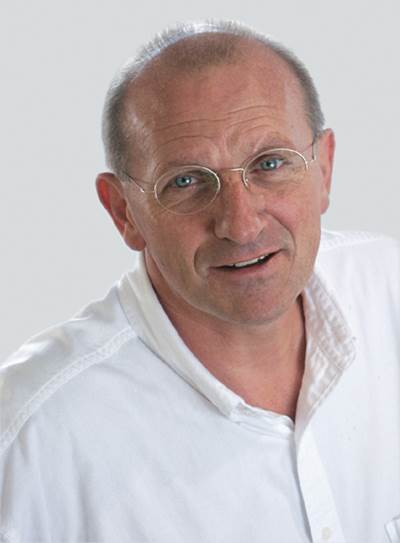Composites education: Looking back to see what's coming
During a recession, education is more important than ever. Laid-off workers need to upgrade their skills.
Share
Read Next
During a recession, education is more important than ever. Laid-off workers need to upgrade their skills. Employers need educated employees to improve competitiveness and reduce cost. In many ways this offers our industry a chance to upgrade its capabilities and visibility through education. But first we must ask and answer two key questions: Can our past experiences in composites education help us predict and plan? How can our industry use education to prepare for the future?
When I first worked with composites, more than 30 years ago, education was limited in large part because of constraints within the industry: Most of the university-level composites work in the U.S. was based on defense applications. These high-end applications typically had no “bottom line” — they were used primarily to solve problems that had no other solution, thus cost was not a major decision-making factor. As a result, students were not trained in cost modeling, low-cost manufacturing, or other cost-control concepts. Although fiberglass was in use in nondefense applications, there were few if any education programs for shop personnel and there was minimal interest in applications outside the aerospace sector. Most high-end nonaerospace applications were closer to a dream than reality. There were few foreign-born professors or students and, because the U.S. was confident its composites work was the best in the world, its educators (and others) paid little attention to composites developments in most other countries.
As a discipline, composites was still a work in progress. Associate professor Dan Adams of the University of Utah reminded me that, for the most part, composite mechanics was still in development and neither commonly recognized nor appreciated in industry or academia. It was not, therefore, well documented in textbooks, and even after Prof. Robert Jones published his classic mechanics text in 1975, it was years before it gained widespread use. Prof. Anthony Vizzini of Mississippi State University notes that until the late 1990s, manufacturing texts were limited. And Prof. Adams points out that in the 1970s and 1980s, “computer code” was not commonly available for composites applications. To perform computer-assisted calculations, a composite mechanicist had to be a programmer, so programming was a part of most composites curricula. Design data for composites and, as Dr. Don Adams, emeritus professor and former director of the University of Wyoming’s Composite Materials Research Group, points out, test techniques were still “in development.” Most data analysis was done with mechanical plotting devices and electronic calculators.
Unlike many other academic subjects, composites education was moderately interdisciplinary and not uniquely located in any one department or school. But it was uncommon at universities and even less common at community colleges.
Today, the composites industry is a much broader discipline and its roots in education run deeper. In the U.S., university composites work involves military, aerospace, commercial, sporting goods, automotive, computer and many other applications. Foreign-born professors and students are common and U.S. professors and students use research from and interact with other researchers all over the world. Composites work remains interdisciplinary and composites education is much more common, though still not universal.
Programs to educate composite technologists, technicians and shop personnel are proliferating, especially in rapidly growing areas, such as renewable energy. Composites professionals, even in the defense industry, have recognized the bottom line and students usually are taught to design and manufacture with cost in mind.
“Mechanics” is part of most composites programs and can be offered effectively from very good textbooks, even by professors who have little hands-on composites experience. Because computer code is readily available, it is no longer a necessity that composites students and mechanicists also be programmers. Mechanics, test analyses, and design data are routinely computer processed. While new materials will continue to be developed, we have good engineering design data for most existing material systems.
However, composites manufacturing is still more art than science and, therefore, not all processes are optimized for cost or efficiency. Prof. Vizzini points out that while manufacturing and fabrication processes are being developed and taught in many colleges and universities, there still is no “classic” manufacturing text. In addition, manufacturing approaches are advancing rapidly, so unless the instructor refreshes his or her skills in industry, manufacturing courses, almost inevitably, lag behind industrial practice.
To keep current with both manufacturing and design, assistant professor Valeria La Saponara of the University of California, uses current articles from journals and trade publications in her classes. She also includes manufacturing demos and hands-on projects, and covers emerging technologies, such as nanocomposites.
Although Prof. La Saponara has seen a drop in composites class enrollment, which she believes is related to the recession and resulting budget cuts, Prof. Adams reports a rise in enrollment, presumably because the number of composites companies in his area continues to increase. Prof. La Saponara sees a disconnect, however, between the current interests of graduate students and the need to be more multidisciplinary — most want to focus on one subject area and seem unaware of the role composites can play in markets such as renewable energy, where weight reduction can cut energy cost. Experience tells me that this tendency to be too narrowly focused is a longstanding problem.
Given this assessment, the future of composites research and education likely will depend on an even more diverse cross section of government and industry initiatives. In an increasing number of applications, composites will be the means to meet performance and cost targets, and composites education will need to increase its crossover with alternative energy and other emerging disciplines. And industry must collaborate with academia to influence educational trends and ensure that instruction is current and relevant.
The science of manufacturing will continue to advance, facilitating instruction in best manufacturing practices. Because computer use will become essential, even in more mundane composites applications, universities and colleges must train composites students to use the most current tools. Use of part-time instructors from industry — still uncommon in colleges and even less likely in universities — could help close the gap between what is practiced and what is taught. However, hands-on composites labs and projects will remain critical to producing graduates who are ready to go to work, and instructors will continue to need to update their skills.
As New York Times columnist Thomas L. Friedman contends, The World is Flat … and getting flatter. We will see more interaction across national boundaries — a worldwide collaboration enabled, in part, by the Internet and video conferencing. Long-range collaboration, satellite education, offsite manufacturing demonstrations and interactive development will be increasingly common. The field also will become more interdisciplinary: Students in school today would be well advised to participate in courses, hear speakers and study concepts from other disciplines.
But this all depends upon what we do today. The decisions government entities, colleges and universities make now will be critical to the future of composites education. If the current recession is allowed to curtail funding for education and the “marketing” of composites to prospective students, we will be inadequately prepared to respond to future opportunities.
Related Content
Welding is not bonding
Discussion of the issues in our understanding of thermoplastic composite welded structures and certification of the latest materials and welding technologies for future airframes.
Read MoreComposites manufacturing for general aviation aircraft
General aviation, certified and experimental, has increasingly embraced composites over the decades, a path further driven by leveraged innovation in materials and processes and the evolving AAM market.
Read MorePlant tour: Albany Engineered Composites, Rochester, N.H., U.S.
Efficient, high-quality, well-controlled composites manufacturing at volume is the mantra for this 3D weaving specialist.
Read MorePlant tour: Joby Aviation, Marina, Calif., U.S.
As the advanced air mobility market begins to take shape, market leader Joby Aviation works to industrialize composites manufacturing for its first-generation, composites-intensive, all-electric air taxi.
Read MoreRead Next
Composites: Past, Present and Future: Marine Composites Training and Education, Part I
In Part I of a series about the past, present and future of training in marine composites, Andre Cocquyt outlines the historical difficulty composites manufacturers have had in finding qualified technicians, and how that reality led to his involvement in the development of training programs.
Read MoreComposites: Past, Present and Future: Marine Composites Training and Education, Part III
In Parts 1 and 2, Andre Cocquyt outlined the difficulty that composites manufacturers have faced in finding skilled employees and described a transferable model for local/regional training programs. In Part 3, he discusses the critical issue of program funding.
Read MoreComposites: Past, Present and Future: Marine Composites Training and Education, Part II
Last issue, in Part I, Andre Cocquyt identified the dire need for technical training in marine composites. In Part 2, he outlines a plan that could meet that need.
Read More








.jpg;maxWidth=300;quality=90)












